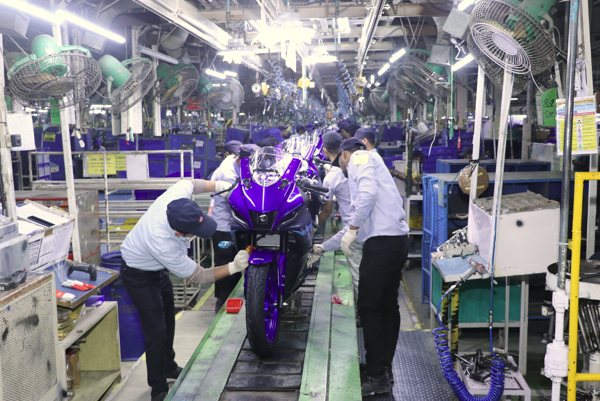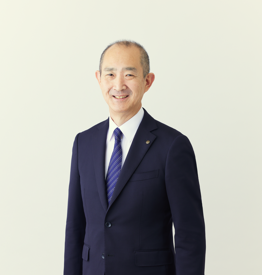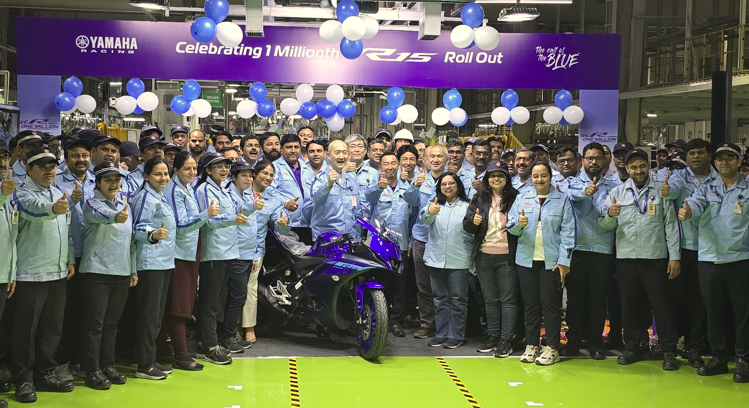
New Delhi: As Yamaha Motor works towards a new business strategy in this disruptive era of mobility options, Itaru Otani believes that India could have an important role to play in the future.
“We are now moving towards carbon neutrality with options like electric, CNG etc. Different regulations across the world can then pose a challenge because we develop models country-by-country to meet individual market demands,” the Chairman of Yamaha Motor India Group told ETAuto in a recent interview.

This could then take the form of a specific product apiece for Japan, Europe, India etc and “it is not easy” with limited engineering resources catering to a huge model lineup in each country. Going forward, Yamaha sees an opportunity to change its focus and adopt a sharper platform strategy which can help meet each market’s specific requirements.
The new thinking within headquarters at Japan is to perhaps limit the number of platforms even though all this is still up in the air with no official confirmation coming in yet. A more detailed narrative is likely to be articulated in Yamaha’s new midterm management plan which will be rolled out shortly.
Big role for India
Even with fewer platforms, there could still be a host of variations that can cater to customer needs across the world. It is in this context that India could play a big role for Yamaha even while it is already being identified as a hub for larger displacement two-wheelers that can be produced at its Chennai plant and shipped to a host of other countries.“We have two plants and can expand capacity in the south which will be the export hub for the future to suit the needs of advanced countries,” said Otani. During a recent investor presentation, Yamaha stated that it was carrying out modifications at its Chennai facility so that it was in sync with the overall global vision of making it a hub for premium motorcycles and scooters.

“We viewed its (Chennai) strength to be the ability to manufacture small-volume, low-priced models at high speed. However, with the change to our premium model strategy, it has now become necessary to manufacture medium-volume, premium-priced models,” added the management.
Yamaha was, therefore, modifying the Chennai facility to align with its current strategy by changing floor layouts etc. Its Surajpur plant in northern India has land constraints that make physical expansion difficult, “so we are aiming to raise productivity in order to up production volumes”.
Expanding capacity in Chennai
Chennai, on the other hand, will be expanded as necessary to increase production. According to the presentation, it was possible to accommodate the production of premium models in this facility and “we are considering this move”.
It is only the FZ series that will be made in both facilities since it was the “most produced line” of models when Chennai first started operations. “The FZ series comprises our highest production volume, so manufacturing it at both the Chennai and Surajpur factories is how we have achieved a balance in our factory operations,” said the management.
The bigger story behind this realignment is more to do with the increasingly important role of India as a global hub. Yamaha only has a few factories worldwide that make high value-added motorcycles with small to midrange engine displacements.
According to Otani, the two-wheeler landscape has also changed dramatically with strong local brands emanating from India and China. This means that there is stronger competition coming into the arena and it was important for Yamaha to take a relook at its cost of production.
Vendor selection
“Production, operating and purchasing costs come into the picture and vendor selection will become key where we need to carefully see who is the most reliable,” he added. Now with India likely to emerge as a strategic global hub, the next job on hand is to identify the models that can be produced here and then exported.
Japan and Indonesia are the other manufacturing points and “we need to see which (engine) displacement is most effective” in India. “We know buyers prefer bigger displacements, smart features and higher levels of novelty overall which translates into additional value,” said Otani.
This is one of the big challenges ahead for Yamaha where the underlying objective in seeking new manufacturing hubs is to ensure better cost control. “A step-by-step approach is the best bet,” he added.
As for electric, Yamaha had launched models in Europe and Taiwan but sales were not too high since government subsidies were limited. Most EVs are costly and battery management is expensive with limited range. Simply put, this means that they have their work cut out in terms of being perceived as a value proposition for the end-user.
Centralised platform strategy
Yamaha is now exploring the option of adopting a centralised platform strategy where there is no need to “develop the model country by country”. On the contrary, this new approach will ensure use of the platform “most efficiently”.
Beyond this, Yamaha has chosen a premium strategy for its two-wheeler business which means this should extend to electric also. “We cannot enter a cheaper electric area just for volumes. Premium is key in electric also,” said Otani.
It now remains to be seen if India will complement Japan’s efforts in doubling up as a hub for EVs too where parts can be sourced at competitive prices. “We are thinking of a host of options and nothing is decided yet,” he added.
Countries have their own norms and policies when it comes to electric and the bigger challenge is the availability of subsidies. Right from Indonesia, Taiwan and Vietnam to India and Thailand, EVs are now the new mantra except that Yamaha just cannot afford to develop different models for each of these regions. “We have to study the situation in each country carefully since this is an expensive proposition,” said Otani.
Quality control
As India takes on more responsibilities, it is only natural that higher emphasis be paid to quality control across the entire supply chain including dealers and suppliers. “Customer satisfaction is the key for success along with the strength of the Yamaha brand in the premium segment. We create lifelong customers and keep relationships permanent” he said.
In its quest for carbon neutrality, the company is also working on a host of clean options like biofuels, hydrogen etc. Brazil was a “good experience” where Yamaha developed the right technology for ethanol and for this to be successfully replicated in India, infrastructure creation is an imperative. “There is no point just developing models with no support system in place,” said Otani.
















